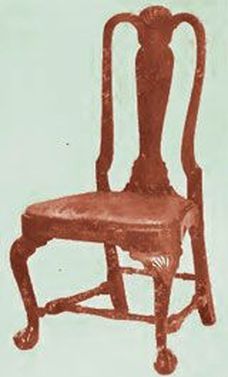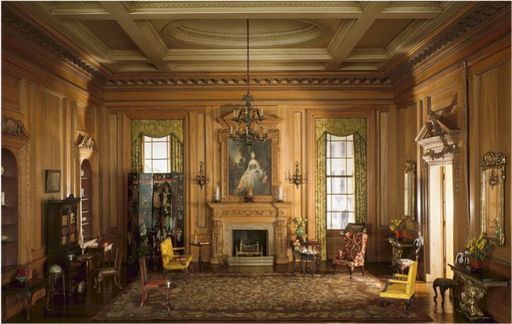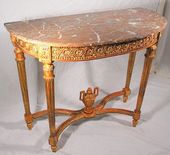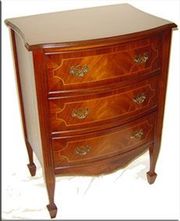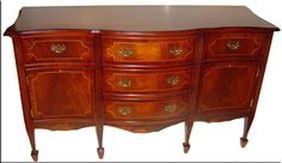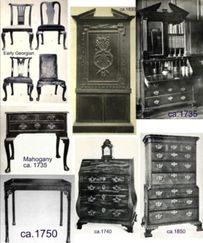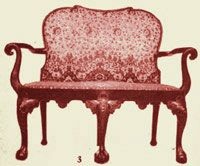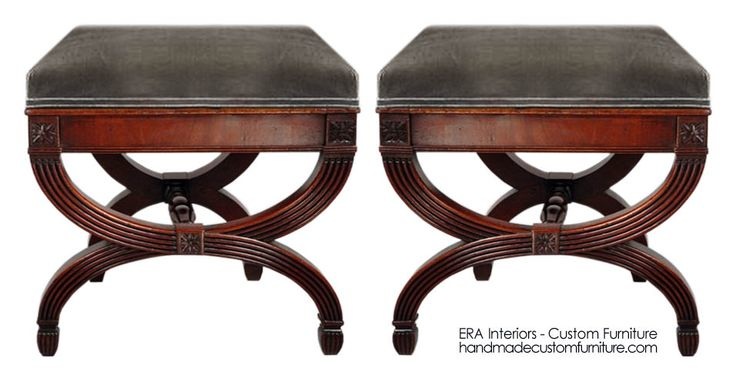Georgian
|
Georgian Color
Colors were pale and subtle—cream, dusky rose, sage, pea green, powder blue. Florals were also found, and in more grander houses, gold and murals were the preferred wall coverings. Upholstery and curtains often had matching fabric.
|
Georgian InfluenceEarly Georgian style was the tail-end of Queen Anne design, and this gradually became more severe in its lines and architectural detail.
Architecture style was copied from Ancient Greece and Rome, however a lot of Chinese design showed through in the interior. Chinese motifs like peonies and chrysanthemums were found in the fabric and Chinese porcelain and motif table lamps were common. Georgian furniture was strongly influenced by Palladian, Rococo and Neo-Classic design. . |
Georgian Furniture
In early Georgian times, heavy carved and gilded pieces were upholstered in velvet and damask. Fabrics were luxurious: brocade, damask and tapestry, with colors and patterns kept subtle. A royal style extended into common houses with cabriole legs and claw feet on chairs and baths creating an almost throne-like feel. Mahogany slowly replaced walnut as the wood of choice.
The furniture was delicate, and the fireplace was the heart of the room. It was often fully outfitted with cast iron, carved pillars and medallions, and an opulent fire screen. |
Famous Designers of the Georgian Style
Mid Georgian times were greatly influenced by designers Chippendale, The Adams Brothers and Hepplewhite. It was a time of experimental design.
Chippendale’s early work made use of the cabriole leg with carved foot. He used many Rococo motifs such as C scrolls, flowers, foliage, shells and rocks. He also favored the incorporation of Chinese style into some of his later works.
The Adams Brothers designed strictly for the super rich however, their ideas merged into the mainstream. They did not make chairs, but favored side tables, cabinets, bookcases, settees, and most of all, sideboards.
Hepplewhite chose to adapt the opulent and largely unobtainable Adams designs for a wider market. His furniture bridged the decline from rich mahogany into the lighter and more delicate satinwood.
Chippendale’s early work made use of the cabriole leg with carved foot. He used many Rococo motifs such as C scrolls, flowers, foliage, shells and rocks. He also favored the incorporation of Chinese style into some of his later works.
The Adams Brothers designed strictly for the super rich however, their ideas merged into the mainstream. They did not make chairs, but favored side tables, cabinets, bookcases, settees, and most of all, sideboards.
Hepplewhite chose to adapt the opulent and largely unobtainable Adams designs for a wider market. His furniture bridged the decline from rich mahogany into the lighter and more delicate satinwood.
